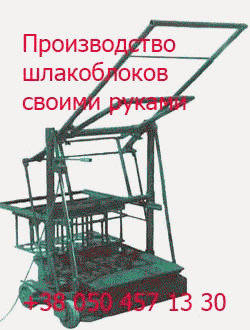The sample is sprayed continuously with a 5% aqueous sodium chloride solution. There are three variations of the test: the salt spray fog test, the acetic acid salt spray test, and the copper chloride-acetic acid salt spray test. For standards, see Table 1.1 (“Corrosion testing: NaCl”). Materials and apparatus: spray chamber, test solutions (5% NaCl […]
Архивы рубрики ‘Industrial Inorganic Pigments’
Fastness to Chemicals [1.76]
 7 сентября, 2015
7 сентября, 2015  Pokraskin
Pokraskin General Chemical Resistance This can be classified as short-, medium-, or long-time resistance. Changes in the coating are assessed visually. For standards, see Table 1.1 (“Chemical resistance”). Apparatus: film thickness measuring equipment. Resistance to Water in Sulfur Dioxide-Containing Atmospheres For standards, see Table 1.1 (“Corrosion testing; SO2” and“SO2 resistance”). General conditions are standardized for exposing […]
Heat Stability [1.76]
 6 сентября, 2015
6 сентября, 2015  Pokraskin
Pokraskin Measured values of the heat stability of pigments depend on the type and duration of the heat applied, and also on the binder used. Low thermal stability in white coatings leads to yellowing, even when the unpigmented binder is resistant to yellowing. With colored coatings, changes in the hue of the pigmented binder can be […]
Effects of Humid Climates
 5 сентября, 2015
5 сентября, 2015  Pokraskin
Pokraskin The specimen is exposed to warm air saturated with water vapor, with or without intermittent cooling to room temperature. The test is very suitable for assessing the corrosion resistance of metals, protective coatings, and composite materials in buildings. For standards, see Table 1.1 (“Climates: Containing evaporated water”). Apparatus: Kesternich condensation equipment. 1.4.2.3
Assessment ofGloss
 4 сентября, 2015
4 сентября, 2015  Pokraskin
Pokraskin Gloss is not a purely physical quantity; it is also dependent on physiological and psychological factors. The usefulness of measured reflectance values lies in the possibility of detecting surface changes of the test sample and observing them over a long period. These changes can be produced by weathering, abrasion, and similar causes of surface wear, […]
Degree of Chalking
 4 сентября, 2015
4 сентября, 2015  Pokraskin
Pokraskin The degree of chalking of a coating is measured by the quantity of loose pigment particles. It may be determined by three methods: 1. KempfMethod. For standards, see Table 1.1 (“Chalkingdegree: Kempfmethod”). Water-treated photographic paper is applied to the coating (with the humid gelatin side facing the coating surface) and pressed by means of a […]
Accelerated Tests
 3 сентября, 2015
3 сентября, 2015  Pokraskin
Pokraskin Weather resistance in an accelerated test is defined as the resistance of plastics towards changes caused by simulated open-air weathering (simulation of global radiation by means of filtered xenon arc radiation and periodic rain). After the weathering (measured by the product of intensity and duration), defined properties of the test sample are compared with those […]
Weather Resistance
 3 сентября, 2015
3 сентября, 2015  Pokraskin
Pokraskin The empirical tests described below determine the chalking and weathering differences between two pigments, but do not always give the true differences. Other test methods have therefore been developed, e. g., determination of mass losses on weathering (gravimetric test) [1.65].
Standard Depth of Shade
 2 сентября, 2015
2 сентября, 2015  Pokraskin
Pokraskin The depth of shade is a measure of the intensity of a color sensation. It increases with increasing chroma and generally decreases with increasing lightness. The colorfastness of colorations (e. g., textile dyeing) is dependent on depth of shade; the fastness properties of pigments or pigmented systems must therefore be tested at a predetermined depth […]
Test Methods
 2 сентября, 2015
2 сентября, 2015  Pokraskin
Pokraskin 1.4.2.1 Light Stability Accelerated Tests Light stability is a material property. It is defined as the resistance of coatings towards changes caused by the action of global radiation (daylight phase: standard illuminant D 65), possibly in the presence of moisture. In coatings, light and moisture can lead to chalking and changes in gloss and color. […]
 Опубликовано в рубрике
Опубликовано в рубрике 
